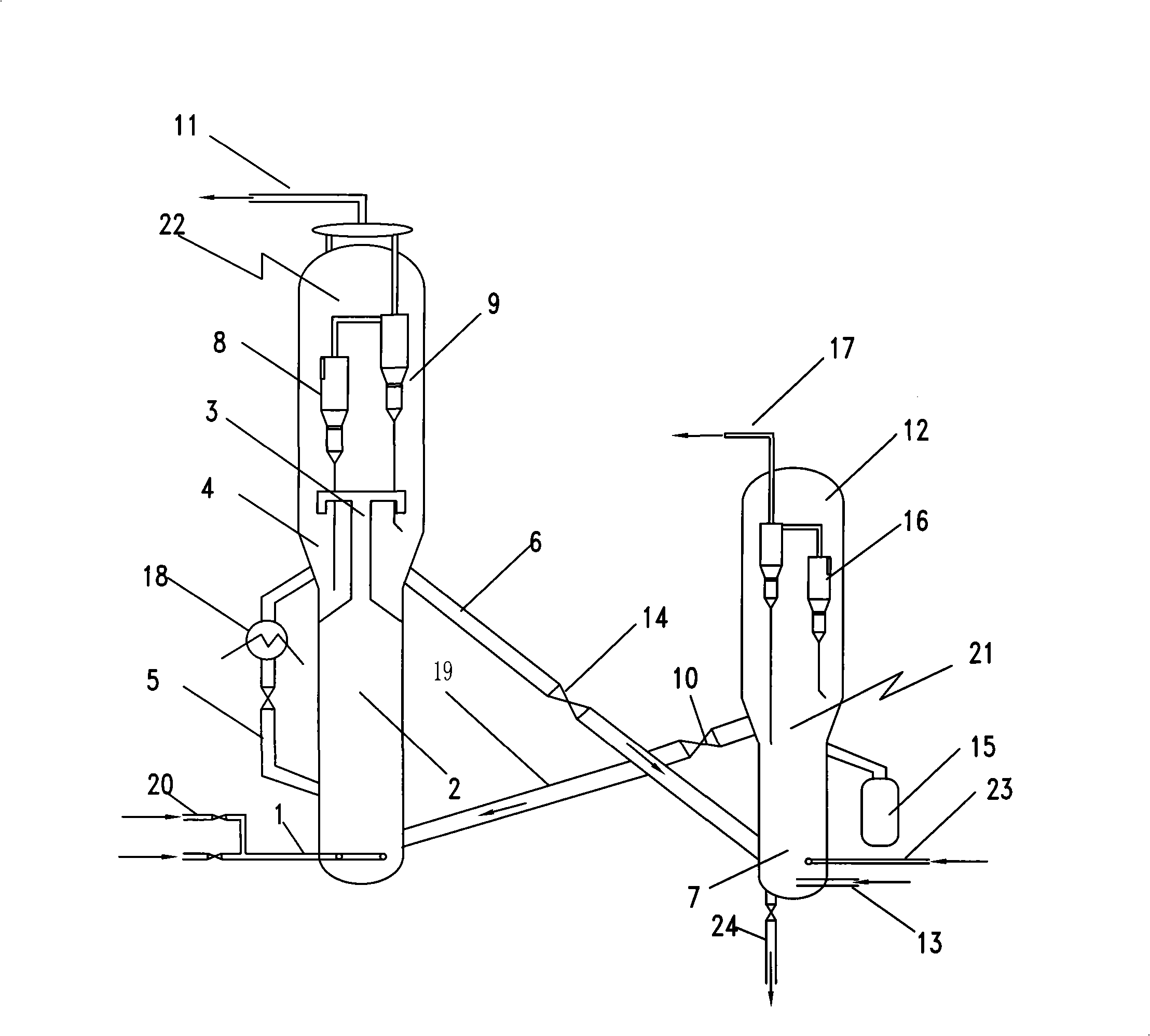Starting method of reaction-regenerative device for preparing low carbon olefin form methanol
A low-carbon olefin and regeneration device technology, which is applied to chemical instruments and methods, catalyst regeneration/reactivation, and hydrocarbon production from oxygen-containing organic compounds, etc., which can solve problems such as difficulty in driving
- Summary
- Abstract
- Description
- Claims
- Application Information
AI Technical Summary
Problems solved by technology
Method used
Image
Examples
Embodiment 1
[0018] Such as figure 1 The methanol-to-light olefin reaction-regeneration system shown, the reactor is a fast bed, the regenerator is a bubbling bed, the catalyst is SAPO-34 molecular sieve, the feed rate of methanol is 4.2 tons / hour, and the fuel gas is fed into the auxiliary combustion chamber Ignition is used to heat the regenerated air. After the regenerated air is heated, it enters the regenerator, heats the regenerator to about 450°C, and increases the regeneration pressure so that the regenerated air can enter the reactor through the regenerated inclined tube and the inclined tube to be produced, and the reaction The device is heated to about 230°C. The catalyst is transferred from the catalyst storage tank to the regenerator through a large dosing line. When the material level of the regenerator bed reaches 1 meter above the position of the combustion oil nozzle, and the temperature of the dense phase section of the regenerator is greater than 370 ° C, the regenerator...
PUM
 Login to View More
Login to View More Abstract
Description
Claims
Application Information
 Login to View More
Login to View More - R&D
- Intellectual Property
- Life Sciences
- Materials
- Tech Scout
- Unparalleled Data Quality
- Higher Quality Content
- 60% Fewer Hallucinations
Browse by: Latest US Patents, China's latest patents, Technical Efficacy Thesaurus, Application Domain, Technology Topic, Popular Technical Reports.
© 2025 PatSnap. All rights reserved.Legal|Privacy policy|Modern Slavery Act Transparency Statement|Sitemap|About US| Contact US: help@patsnap.com

